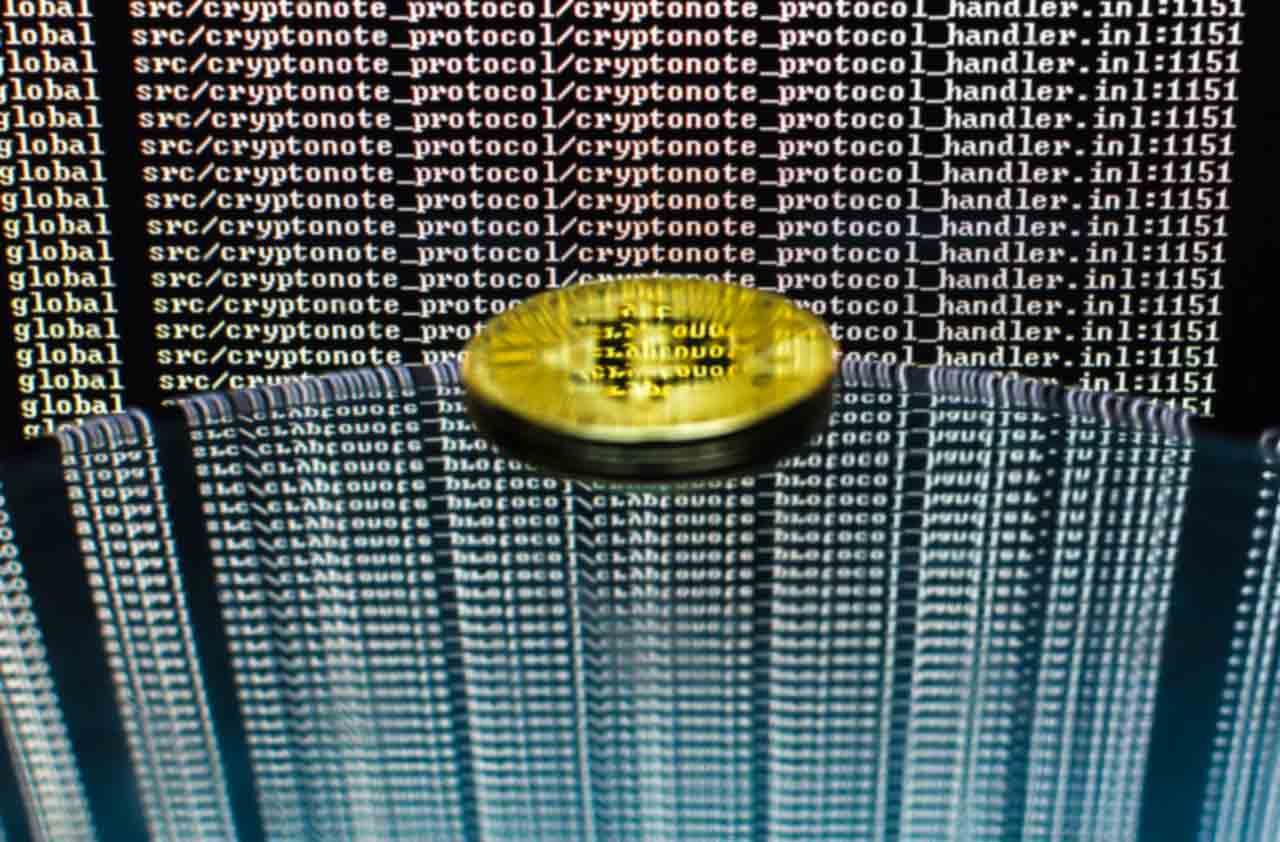How to Explain Bitcoin to Your Grandchildren
A monetary blast from the past: To understand today's new cryptocurrencies, it helps to take a look at how currencies evolved in the first place.


Kids love stories and make-believe, so why not share the story of bitcoin with your grandkids? I realize that the tale of bitcoin and other cryptocurrencies is not fantasy, but it sure does feel that way because these new electronic mediums of exchange have been created out of “thin air.”
The point is that we are in a new digital world and it is here to stay. So, as grandparents, we need to stop fighting the changes and get ahead of the curve. Who better than you to teach your grandchildren about this new world of money?
The Good Old Days Are Just That
We have seen big changes, and we adapted to them. Remember when we were so excited to be the first family on the block to get the new rotary Princess phone in sky blue or the excitement of the first mobile phone that was about the size of a shoe box and hardly worked anywhere?

Sign up for Kiplinger’s Free E-Newsletters
Profit and prosper with the best of expert advice on investing, taxes, retirement, personal finance and more - straight to your e-mail.
Profit and prosper with the best of expert advice - straight to your e-mail.
Let’s face it, our grandkids never knew those days and can now place and receive calls from their watches! And yes, you remember when the home video camera was invented. It was usually Dad who carried it around with that huge light bar attached. Today’s youth can record video from their phones and even send those recordings out to the world with one click. I wish I could tell Dad about that!
Share your stories of how it used to be with your grandkids. They need to know them. (My kids loved the stories of black-and-white television with only three channels.) These may be entertaining anecdotes, but they are also a great segue to be a vital part of their learning today. And, digital media affects every aspect of our lives, especially our interaction with money.
The new world has produced a new way to look at the old world of money. The story of money is about make-believe, because the value we give to money is not real or tangible. We give it value every time we use it to pay for something. I’m jumping ahead, but you get the point. Start the money conversation with your grandchildren with a simple explanation of why we even have money.
Why Money Was Invented
Once upon a time, about 10,000 years ago, people had to live where they could find food. Groups of people moved, from place to place, in search of something to eat. Sometimes one group of people would meet another group and see new things — new things they wanted. Then, the groups decided to trade with each other.
Trading, or bartering, was easy as long as there were only a few things to swap. Villages grew, and when there were hundreds of items to swap, the bartering system got very complicated. People had to carry around everything they wanted to trade with — and that got very difficult. In addition, it was not easy figuring out and agreeing on the value of things. You can only tell the value by knowing what people are willing to give you in exchange for it. When people bartered, they needed to agree on the value of their possessions, otherwise, no deal.
They needed an easier way to trade.
Instead of bartering or trading with each other, people sometimes used a medium of exchange. The medium of exchange was a standard measure of value. For instance, if shells were used as a common medium of exchange, the value of everything was measured in shells. Let’s say a hat cost five shells, and a bunch of bananas cost seven shells. People brought their goods to market, picked out what they wanted, and agreed upon a medium of exchange. Buying and selling became easier.
Different items were used as a medium of exchange. Some of my favorites are:
- Salt
- Tea leaves
- Feathers
- Seeds
- Camels
- Shells
- Dried fish
- Elephant tail bristles
- Dead rats!
But many of these mediums of exchange didn’t work well. Feathers blew away. Shells crushed. Dried fish smelled. Also, in the case of shells, if you lived by the shore, you could collect shells each day and be richer than the mountain people, who had no shells.
People discovered that they needed to control the supply of the medium of exchange to make it work. Precious metals, like gold and silver, were hard to find. As such, they became great mediums of exchange. Also, in those early days, kings and queens could control the production of precious metals, and the value could be stamped on coins to let everyone know its worth. That is how our first coins came into being.
If you were rich, it was hard to carry all of your coins around. You left your precious metal at the goldsmith shop or jewelry store in town. These establishments had a vault, and a depositor would be given a paper receipt for the gold or silver held by the goldsmith. Goldsmiths became the first bankers, and those paper receipts became paper money. However, the Chinese are credited with printing the first easy-to-carry bills.
As time went on, there were people who didn’t trust that their money was valuable, so governments, including our own, backed up their money with real gold held in vaults. As our country became economically stronger and stronger, the United States Treasury Department decided that it would be better not to have our money backed by real gold and silver. They said that our money was backed by “the full faith and credit of the United States.” The concept can be hard to understand because, if everyone got scared all at once and wanted their money from banks all at the same time, we would not have enough printed money. Another fairy tale, I suppose for another time.
The Not So New World
I spoke to an expert in the cryptocurrency world, who eased my misgivings around this emerging sector. Michael Collins, co-founder/CEO GN Compass, explained that, “We live in a world where we work digitally, shop digitally, buy music digitally, perform searches digitally, socialize digitally, even date digitally. So it makes sense that we will have our money created digitally, as well. It is just the next evolution of the 400+-year-old financial system.”
Collins went on to explain that, “The concept of cryptocurrency has been around since the early ’90s, where different cryptographers created and developed the idea for a digital currency that was not controlled by a central bank. After the 2008 global financial meltdown, people became disenchanted with big banks and started to take a look at digital currencies as a way to store value and as a form of payment. Bitcoin was the popular platform to go live in January 2009. Since then many others have followed suit.”
What Is Bitcoin?
Now for the fun part. Remind your grandkids that a medium of exchange is anything that people agree upon to buy and sell goods or services. Also, explain to them that now, when you use a credit card or PayPal, you are using digital cash. You are not paying your bills by running around with a pile of bills and coins.
Well, a few years ago, bitcoin became a medium of exchange; a currency for people to buy and sell things. It was created and used electronically, only on the Internet. It isn’t controlled by anyone. It almost seems like magic; bitcoin is a currency that was created out of thin air. And, everyone can see all of their transactions on a public ledger that people call a blockchain.
One big difference with bitcoins and our traditional currency is that when you want to send money to another person, it doesn’t go from your bank to theirs: It goes directly to the person. Also, remember when I mentioned that people decided the value of something in the marketplace long ago? Bitcoins work the same way. Their value, and therefore their buying strength, goes up and down. Its value is gauged against dollars, for instance. If you have actual money, you can use some of that money to buy some bitcoins. So, let’s say, perhaps you could buy a bitcoin for a dollar and maybe if lots of people think it’s cool to use them demand will go up. As demand goes up, so does the price and value of the bitcoin. In fact, that’s exactly what happened. It was nuts. Bitcoin hit an all-time high of almost $20,000 per unit in 2017!
Every time a transaction takes place, someone has to verify that it is real because it’s important for everyone to trust bitcoins and to make sure that the transaction was completed only once. I think of this verification as a math game. Individuals, or a group of people, use their computing smarts on powerful computers to solve a complex math problem and come up with an answer called a nonce. They have to follow special rules. Once this problem or nonce (mathematical number) is solved, the transactions go through, bitcoins are transferred to the people or companies, and more transactions can be verified and the next group of transactions (block) can be recorded and verified.
The person, or group of people, who work hard to solve the nonce are paid a transaction fee for their work by the bitcoin sender. They also receive bitcoins through a process called mining (a term associated with mining for gold). When they solve the nonce, they get the bitcoins. Also, just like you have a wallet for your bills and coins, bitcoin provides a digital wallet. With bitcoin you have your own secret password or private key that only you know, as well as an address key where bitcoins are sent to you. Think of it kind of like an email address for receiving emails and your private key as your email password to access and send emails. You use a person’s address key to send them bitcoin, and you give someone your address key to receive bitcoins. Your private key (like a password) gives you access to your wallet and to send bitcoins. Your private key should be kept is a safe place. If you lose it, all your bitcoins are gone.
The Moral of The Story
Grandparents, you have kept up with change and, in so many cases, you were the catalyst for change. Keep embracing change and the wonderful place you hold in your grandchild’s life as a purveyor of wisdom. And, remember the words of Confucius, “Life is really simple, but we insist on making it complicated.”
Get Kiplinger Today newsletter — free
Profit and prosper with the best of Kiplinger's advice on investing, taxes, retirement, personal finance and much more. Delivered daily. Enter your email in the box and click Sign Me Up.

Neale Godfrey is a New York Times No. 1 bestselling author of 27 books that empower families (and their kids and grandkids) to take charge of their financial lives. Godfrey started her journey with The Chase Manhattan Bank, joining as one of the first female executives, and later became president of The First Women's Bank and founder of The First Children's Bank. Neale pioneered the topic of "kids and money," which took off after her 13 appearances on The Oprah Winfrey Show.